The overarching purpose of a safety job briefing is to identify, evaluate, and control hazardous situations. While many workers would view these discussions as boring and/or a waste of time, the safety briefing has potential to be the most interactive, enlightening, and intriguing part of the work day if properly planned and executed with meaning. Here are the 9 ways to keep safety briefings fresh, collaborative, and effective:
- Grab the crew’s attention.
- What is the purpose of the job and how does the work done affect the outcome of the business? If people believe in what they’re doing and can see the good in it, they need to be consistently reminded of how they fit into the overall purpose.
- Ensure the location of the brief is in a distraction-free setting, phones are put down, and eyes/ears are on the person giving the briefing.
- Review the scope of work for the day.
- Review each member’s tasks (if in a smaller group) and go through the schedule chronologically, ensuring counterparts understand activity outside of their work.
- Allow crew members to further explain specific tasks to promote collaboration and teamwork to understand how everyone’s tasks fit together in the overall scheme.
- Ask for previous experiences in the project’s specific type of labor.
- Give experienced crew members an opportunity to share previous scenarios and how those situations were handled.
- Allow for crew members to take partial ownership of the safety briefing by sharing best practices in similar situations to the current project at hand.
- Consider new and different safe techniques to execute the job.
- If there is a new worker on site, allow him/her to share any new methods learned during their instruction.
- Review all tools used during work to ensure familiarization and any need for additional or refresher training for inexperienced crew members.
- Allow time for coaching and mentoring before starting new work.
- Once tools and techniques have been reviewed, allow for hands-on time for all workers to be familiarized so they feel safe and confident moving forward.
- This type of collaboration produces trust and security among crew members giving way for each person to be looking out for one another instead of focusing solely on their own tasks.
- Stay on a set agenda but take note of points that need to be reinforced.
- Pay attention to crew members’ body language and engagement level throughout the safety briefing to remember which points need to be emphasized towards the end.
- Keep workers engaged by asking questions or making them go into more detail regarding specific job hazards.
- Continually give crew members opportunities to ask questions.
- Briefly pause between discussion points to allow for crew members to ask questions or spur further discussion for the good of everyone on site who may have similar questions.
- Verify that the crew clearly understands each section of the safety briefing.
- Ask one crew member to cover the scope of work.
- Ask another worker to identify the hazards on the site.
- Ask another person to give emergency instructions.
- Ask another member to describe any new techniques or tools to be used.
- Fill out appropriate documentation for completed safety briefing.
- Make sure all present crew members sign the roster and understand the intent of the documentation showing that they are fully aware of on-site hazards.
- Assign one or a few crew leaders to be point(s) of contact for questions or concerns on the site when it comes to tools, techniques, and/or emergency situations.

Since so much planning goes into job execution, it is imperative to set the tone first and foremost by providing a quality, comprehensive safety briefing. One answered question or period of instruction could save someone’s life.
STC believes in outcomes-based activity in which the “little things,” such as safety briefings, end up shaping the big picture of an organization through its culture, level of teamwork, and overall effectiveness on job sites.
If you are in need of assistance with safety briefings, trainings, or general consulting for your organization, please reach out to the Business Development Manager, Ryan Brence (469)500-2502, for more information.
References:
Richardson, Jessica. “How to Deliver an Effective Safety Job Briefing.” Professional Safety, March 2017, pp. 36-37.



